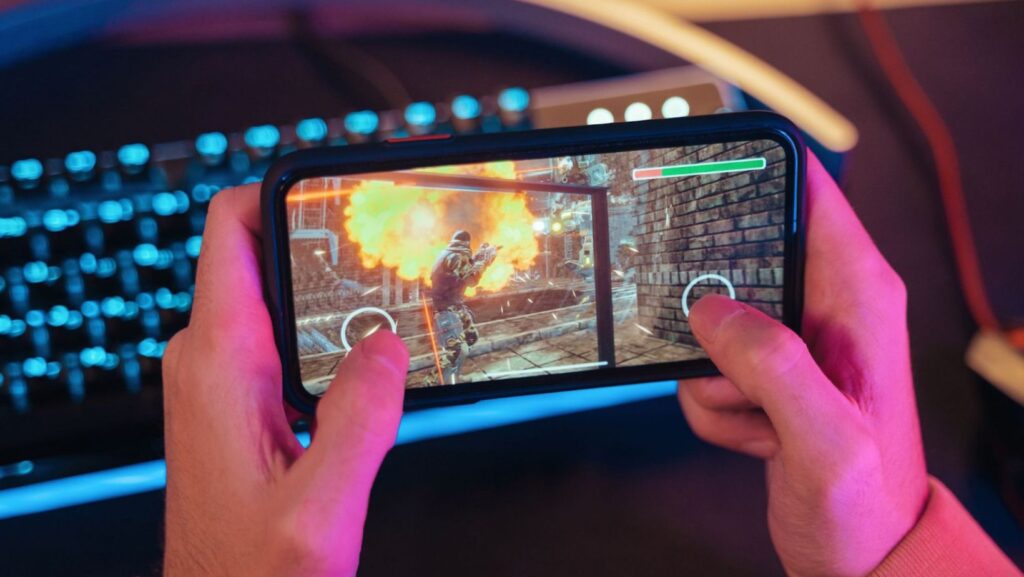But things changed fast. According to Newzoo’s 2024 report, more than 68% of mobile gamers now use some form of in-game chats to communicate while playing. What was once a solo activity has turned into a global community built on text bubbles, emojis, and instant connection.
Today’s players don’t just want to win; they want to connect, strategize, and share. A puzzle game becomes a team effort, a battle royale becomes a social arena, and even a farming game feels richer when you chat with gamers online who understand the joy of a perfect harvest.
Table of Contents
ToggleTalking Changes Everything
Think about the last time you played a competitive match without communication. Frustrating, right? Without coordination, victory feels distant. With chat, it’s different. Players can give quick tips—“Watch the left side!”—or celebrate small wins together. That simple exchange transforms gameplay.
Live chatting boosts reaction times, strengthens cooperation, and builds trust among teammates. It also keeps users playing longer. Studies show that games offering real-time chat functions can increase player retention by up to 30% compared to those without. Conversation becomes the invisible thread that keeps the experience alive.
And it’s not just text. Many modern games include voice messages, emojis, or pre-set quick responses for instant communication. When players hear laughter, excitement, or frustration in real time, the emotional bond deepens.
Building Digital Communities
Every active chatroom tells a story. Some players discuss strategies, others just talk about their day. In these exchanges, online gaming becomes something greater than play—it becomes community building.
Mobile gaming communities thrive on shared energy. They bridge language gaps and time zones. A player in Brazil can chat with someone in Japan while teaming up with a friend in France. What unites them isn’t geography but passion.
Interestingly, developers are designing entire ecosystems around this idea. Games now host chat-based events, global challenges, and community tournaments powered by live interaction. Developers listen too. Chat logs often inspire updates, bug fixes, or even new features. The audience is no longer passive—it’s co-creating the game world.
The Engagement Boost
When communication enters the equation, something special happens. Engagement metrics skyrocket. Players log in more frequently, stay longer, and spend more on in-game items.
Why? Because social bonds trigger emotional investment. It’s easier to abandon a game than to abandon friends. A chat with gamers online creates accountability and belonging. You log in not just to play, but to say hello.
In psychological terms, live chats activate dopamine loops—that small pleasure hit you get when someone replies instantly. It’s the same mechanism that drives social media engagement, now woven seamlessly into mobile gaming.
This sense of shared experience also nurtures loyalty. Players who communicate regularly inside a game are statistically 45% more likely to return within 24 hours after logging off.
Safe Spaces and Moderation
Of course, open communication has its challenges. Toxicity, spam, and harassment can easily ruin a game’s atmosphere. That’s why moderation tools have become a core part of modern design.
Developers now use AI-driven filters, report systems, and mute functions to protect their users. Some games even use sentiment analysis to detect negative tone before it escalates. The goal isn’t censorship—it’s balance. Players need to feel free, but also safe.
Privacy also matters. Many users prefer to stay semi-anonymous, using nicknames or avatars. This distance can make communication easier, especially for introverted players who still want connection but not exposure.
Anonymous Video Chat and Mobile Gaming
While text and voice chats dominate gaming, anonymous video chat is carving out its niche. Some platforms now allow gamers to see each other without revealing identities—faces are blurred, names are hidden, yet reactions are visible.
No one to play with? Perhaps it’s time to try anonymous chat on platforms like CallMeChat and similar platforms. At the very least, CallMeChat is the easiest way to find someone who can share your interests and simply help you have a great time. It’s especially useful during live events or cooperative missions, where reading expressions can enhance coordination. Imagine seeing your teammate’s excitement when a boss is defeated, or their frustration when a plan fails—without ever knowing their real name.
Developers’ Perspective
From the creator’s side, integrating live chat features isn’t just about fun; it’s a business strategy. Engagement is measurable, and engagement sells. Whether through ads, microtransactions, or premium passes, chat-active players are proven to spend more.
Developers use analytics to track how conversation patterns align with gameplay habits. If players are chatting a lot during certain missions, that’s a signal of strong design. If chat drops off, maybe something’s broken—or boring.

They also experiment with cross-game chat systems, allowing users to stay connected across multiple titles from the same publisher. This strengthens brand ecosystems and keeps communities active even between releases.
A Glimpse into the Future
The future of in-game chats will likely blend AI companions, translated messages, and voice-to-text systems that erase language barriers completely. Imagine a game where you speak in your language and your teammate reads it instantly in theirs.
There’s also potential for more emotional interfaces—avatars that reflect real facial expressions during chat or respond dynamically to tone. The boundary between player and character will blur even more, turning every message into part of the narrative itself.
The next step? Possibly integration with augmented reality (AR) spaces, where chatting feels like sitting beside someone, even from thousands of miles away.
Conclusion: Leveling Up Together
Gaming has always been about more than pixels—it’s about people. Live chats transform a mobile game into a living social network where teamwork, laughter, and even rivalry coexist.
Through chat systems, players boost mobile game engagement, turn random sessions into friendships, and make digital worlds feel alive.
Whether through text, voice, or anonymous video chat, the message is clear: gaming isn’t just about playing anymore. It’s about connecting, communicating, and leveling up together.




